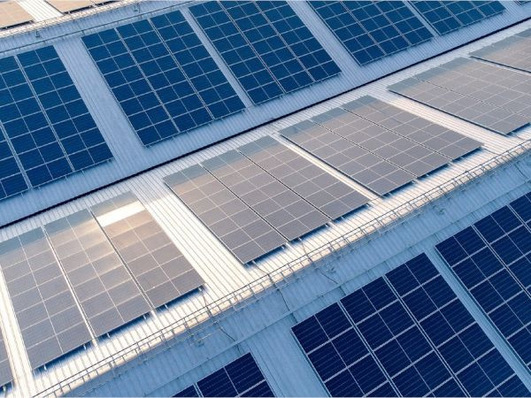The statement that electric heating is uneconomical is refuted by modern heating systems: heating systems with combined heat and power (CHP) are increasingly being used both in new buildings and in renovation projects. They are a sensible alternative because they not only generate heat, but also decentralised electricity.
This also helps to reduce the load on the electricity grid. Heating with photovoltaics is also becoming increasingly interesting in times of rising energy prices. The electricity generated can be used to cost-effectively feed supplementary heating systems: A relatively new and interesting variant is heatable glass with invisible heating elements.
Very versatile in the possible applications
Private households as well as companies and public institutions can benefit from this innovation - a huge growth market for glass processors. Factory halls, offices and living spaces, conservatories, bathrooms - almost any building can be heated with heatable glass panes without major installation effort.
See also: An innovative way to cut tempered glass
There are a number of possible applications: as heating glass in existing windows for indoor or outdoor use (e.g. for de-icing glass roof elements), as heating indoors in permanently mounted glass partitions (room dividers), heating elements suspended from the ceiling, mobile stand-alone heaters, as an anti-fogging solution in damp rooms and much more.
How is heatable glass made?
In the first step, a resilient electrical conductor is applied to the glass by means of busbars mechanically applied to the surface, allowing high electric currents to be directed into and out of the conductive coating. The glass surface between the busbars heats up and releases the heat inwards. The second step: In the area between the busbars, conductor structures of any width and shape are removed by de-coating to enable uniform heating.
Machines to be integrated in glass processing line
The manufacturer Lascom Laser offers its special machines L-matrix GDS (for applying the busbars) and L-matrix LDC (for decoating) for this purpose. The machines can be placed in a conventional glass processing line - their work surfaces are equipped with air systems and sliding stops for glass positioning and are controlled via terminals. On special request, a combined machine is also available, which performs both work steps on a common table.
Also interesting: Laser-treated glass suitable for wireless communication
In combination with the in-house software L-Heatware, complex heated glass panes with decoated conductor structures for different temperature zones can be realised in one production run.
Further applications of Lascom’s machines
In addition, the L-matrix GDS is also suitable, for example, for the production of smart glass or alarm glass - where an electrical connection to the coating must be established. The L-matrix LDC can also be used for the production of radio frequency glass (better mobile phone reception by removing frequency-impermeable metal coatings on low-E glass).













